On this page
Books about WeaversThis page lists books that are totally or partially about Weavers. The books are listed in order of publication date with the most recent at the top.
Weavers
Family: Ploceidae
The weavers are a large family of passerines comprising about 110 species in a number of genera. The family includes weavers, malimbes, quelea, bishops and wodowbirds. The majority of species are found in sub-Saharan Africa with a few species in tropical Asia.
|
|
|
|
Handbook of the Birds of the World, Vol. 15: Weavers to New World WarblersEdited by Josep Del Hoyo, Andrew Elliott and David Christie
Lynx Edicions
2010
879 pages, 60 colour plates, 400+ colour photos, 612 distribution maps.
This volume covers weavers, waxbills, indigobirds, vireos, finches, hawaiian honeycreepers and new world warblers.
|
Buy from amazon.co.uk 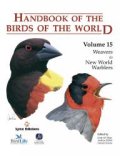
|
|
The Birds of Africa, Volume VII: Sparrows to BuntingsEditors: C Hilary Fry and Stuart Keith
Illustrations: Martin Woodcock, Ian Willis and C. Hilary Fry
Poyser
2004
"This is the final volume in the Birds of Africa series - looking at the rich avifauna of the world's second largest continent. Volume VII treats the remainder of the passerine families of Africa and various offshore islands, covering the sparrows, weavers, whydahs, waxbills, finches and buntings. Like its predecessors, this book boasts an exhaustively researched and referenced text, distilling all available data on the identification, ecology, distribution, behaviour and status of the species covered. Martin Woodcock's colour identification plates are complemented by a wealth of line drawings by Ian Willis which illustrate details of Africa's birdlife such as weaver nest structure and Ploceidae display postures."
|
Buy from amazon.co.uk 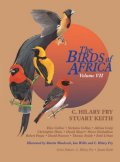
|
|
Bibliography of the African quelea speciesH.D. Oschadleus
Avian Demography Unit, University of Cape Town
2001
"The Redbilled Quelea is a major pest in much of subsaharan Africa and is the bird species that has had the greatest economic impact on the continent. In consequence it is probably Africa's best studied bird species. This book becomes the definitive bibliography of the genus Quelea. The bibliography lists 1880 references."
|
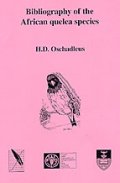 |
|
Bird Nests and Construction BehaviourMike Hansell
Cambridge University Press
2000
"Bird Nests and Construction Behaviour provides a broad view of our understanding of the biology of the nests, bowers and tools made by birds. It illustrates how, among vertebrates, the building abilities of birds are more impressive and consistent than for any other builders other than ourselves, yet birds seem to require no special equipment, and use quite uncomplicated behaviour. In doing so, the book raises general issues in the field of behavioural ecology including the costs of reproduction, sexual selection and the organisation and complexity of behaviour. Written for students and researchers of animal behaviour, behavioural ecology and ornithology, it will nevertheless make fascinating reading for architects and engineers interested in understanding how structures are created by animals."
|
Buy from amazon.co.uk 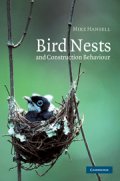
|
|
Quelea Quelea: Africa's Bird PestEditors: Richard L. Bruggers and Clive C.H. Elliott
Oxford University Press
1989
"The red-billed quelea is the world's most numerous bird and a destructive bird pest which lays waste to cereal crops - millet, rice, wheat and sorghum - in many parts of Africa. Although hundreds of millions of quelea are killed every year, the species remains as abundant as ever. This study gives an account of all aspects of quelea ecology and management, its distribution, population, migration patterns and breeding behaviour, monitoring, marking and methods of control."
|
Buy from amazon.co.uk 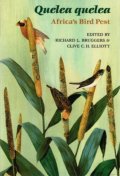
|
|
Africa's Feathered LocustEditors: P.J. Mundy and M.J.F. Jarvis
Baobab
1989
"The first major publication to look in depth at the problem of the quelea, the most abundant species of bird in the world, whose often devastating effect is felt by some 73 percent of sub-Saharan Africa . essential reading for farmers, ecologists, agriculturists, ornithologists and students."
|
Buy from amazon.co.uk 
|
|
The Evolution of Social Organisation and Visual Communication in the Weaver Birds (Ploceinae)John Hurrell Cook
Behaviour, Supplement No. 10
E. J. Brill
1964
From the abstract: "Studies in comparative ethology have been concerned primarily with the analysis of signalling behaviour functioning in communication between conspecific individuals. This behaviour has often seemed to be conventional and without adaptive significance in relation to the physical environment. The present study seeks to emphasise and extend recent trends stressing the important role of species ecology in determining not only the nature of communication behaviour but also the social organisation within which it occurs."
|
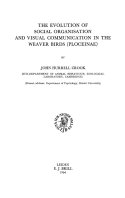 |
|
Catalogue Of The Passeriformes or Perching Birds In The Collection Of The British MuseumSturniformes, containing the families Artamidae, Sturnidae, Ploceidae, Alaudidae also the families Atrichiidae and Menuridae
Catalogue Of The Birds In The British Museum, Volume XIII
R. Bowdler Sharp
15 colour plates: J. Smit, Peter Smit
Printed By Order Of The Trustees
Sold by: Longman & Co.; B. Quaritch; Kegan Paul, Trench, Trubner & Co.; and at the British Museum (Natural History)
1890
From the introduction: "With the present volume the description of the Acromyodian Passeres is completed. It will be seen that, owing to the large accessions to the collection, the series examined exceeds that of any of the preceding volumes. Out of the 601 species and subspecies here recognized, only 58 are unrepresented in the collection, or about 10 per cent. Of these at least 25 are of very doubtful value, so that the collection actually contains nearly 95 per cent, of the known species. The British Museum possesses the types of 152 species, besides those of 61 no longer considered to be of that rank. The number of specimens reaches the total of 11,699. By the acquisition of part of the Shelley Collection of African birds by the Trustees of the Museum, my labours on the Ploceidae have been much facilitated, as I have had before me the whole of Capt. Shelley's series of specimens, on which was based his monographic essay on the African Weaver-Birds. Mr. Seebohm has likewise presented his entire collection of Palaearctic Alaudidae, and the Sturnidae and Ploceidae of the Swinhoe collection, comprising many types of species."
|
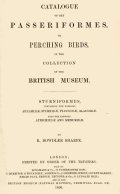
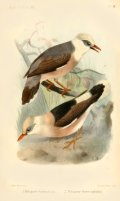
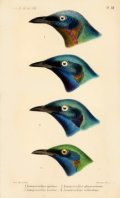 |
|
A Monograph Of The Weaver-Birds, Ploceidae, and Arboreal And Terrestrial Finches, Fringillidae
Edward Bartlett
Illustrations: F.W. Frohawk
Published by the author
1888
|
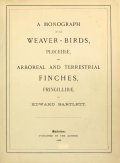
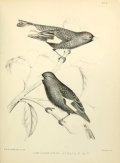
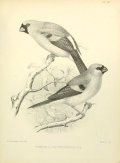 |
|